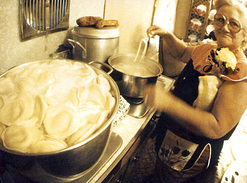 Mama Finzi and her Big Pots Mama Finzi and her Big Pots Making fresh pasta for everyday use is something my mother never did at home. We used dry, boxed pasta when it came to spaghetti, ziti, lasagna and the like. After all, with five kids to feed, she needed to get things done quickly. But once in a while, my Mom would make home made fresh ravioli filled with ricotta cheese. I don't have her recipe for that dough, but I remember it was pretty light and fluffy producing dumpling-like ravioli, not like haute cuisine paper thin ravioli. When I was very young she'd also make small square ravioli by using a wooden ravioli rolling pin with the square shapes formed by a lattice of thin wood strips. That rolling pin, along with her huge aluminum sauce pot and large colander are three treasured heirlooms hanging proudly in my kitchen. Once in a while she'd make large round ravioli and cut them out using a large china cup. In later years, one of my sisters tried making them, but we called them "sinkers" because they were so dense and heavy and oh-so filling. She wasn't such a great cook (we were able to sip her chocolate pudding pie through straws!) There were even more rare times when Mom would make potato gnocchi. Later on in life when Mom was in her 80s she showed me how to make them, teaching me the technique that her mother taught her. I had seen the fork technique on TV cooking shows, where you roll a nugget of dough down the back of a dinner fork to make ridges in each dumpling... the ridges help sauce cling. But them Mom showed me what her mother used to do. A simple technique of using two fingers to quickly roll the nugget to form a cavatelli shape. Press the nugget of dough down and give a quick jerk, cupping your hand toward you, flipping the cavatelli backwards. I still remember her bumpy, arthritic fingers working with a remembered agility as she made them twice as fast as I could. It's times like that which remind me to always include Lucas when making special meals based on family traditions. Well, in our family we still used boxed pasta for most meals, but on occasion we too make fresh pasta for ravioli or fettuccine and sometimes make gnocchi. The last time we made fresh pasta was to make tagliatelle to go with our Easter Sunday Gravy. Each time I make fresh pasta i remember how easy it is to make and try to remind myself to make it more often... You can use any type of flour to make pasta, but I'd stay away from bread flour. All-purpose, Italian style "00" flour makes a silky, delicate pasta while Semolina flour makes a heartier more textured pasta. What I prefer using is ready mixed flour blends specially made for pasta making. I like Hodgsen Mill Golden Semolina and Extra Fancy Durham Pasta Flour but King Arthur Italian-Style Flour is another great choice (it's not available in supermarkets, though). King Arthur is a blend of Durham, Semolina and All-Purpose flours. Next you have to consider whether to add egg yolks, whole eggs, egg whites or just water. Pasta recipes using just water are typically used only when making pasta that will be dried, like from an extrusion pasta die on a pasta-making machine. When you make fresh pasta with only water, it comes out very bland, white and can be very sticky. You can also use recipes that use only egg yolks, which makes a very golden colored rich pasta--but higher than normal in cholesterol and fat. Some mix whole eggs with additional egg yolks--2 egg yolks for each egg used. When you use only egg whites (which are mostly H2O) your pasta will come out almost like if you used water alone. For me, I've gotten great results using just beaten whole eggs--rich enough without adding extra cholesterol or fat. Why complicate things? You mix the ingredients in a "well", by placing the flour on a board and adding the wet ingredients into the center of a well you make in the flour. This is hand work. However, I do recommend getting some sort of pasta roller to roll out your pasta into thin sheets ready for shaping. Sure, you can use a rolling pin if you want, but having a motorized roller that you can set the thickness as you work gives you absolute control. We use a Kitchenaid stand mixer with a pasta rolling attachment. My Basic Pasta Recipe is amazingly simple:
There are many ways to shape pasta. For the tagliatelle, I used a rippled pasta cutting wheel that left a zig-zag edge. But there are endless ways to shape your dough. You can simply leave them in large sheets about 3" wide to make Stracci (rags--great under a Bolognese sauce) or cut the edges with a ripple pasta cutter to make your own lasagna sheets. You can simply cut long thin strips with a knife or a special rolling tool to make tagliatelle or fettuccine. You might buy a Chitarra (pasta guitar... a wood frame with tight wires) to make your own spaghetti. You can cut little 3" x 1" rectangles out and then pinch their centers tight to form farfalle (butterflies). You can also roll triangles around a little wooden dowel to make ziti. Lay out a large sheet, place dollops of ricotta or meat and cheese filling every few inches on it, cover with another sheet, then cut our with a cup and you'll make your own ravioli. Get the kids involved... Lucas loves pasta making. As for drying, you can dry your pasta for bagged storage in a fridge (use within a few days) or freeze by allowing your shapes to dry out completely. You really have to be sure that your pasta is not at all damp or sticky and dusted very well (especially when arranging into bird's nests) or they will stick together. You can then arrange on sheet pans, place into your freezer, freeze and then place in Zip-loc bags for later use. I like making batches that are going to be cooked right away. "Fresh pasta"--Duh. For this reason, I'll tend to use only have my recipe for fresh cooking the same day, and I'll freeze the other half of the dough ball for future pasta making. This dough freezes and thaws perfectly. Perhaps I'll do another post about different pasta shapes and how to make them... soon. Meanwhile, aside from the muscle it takes to knead the dough, making fresh pasta is easy and fairly quick. You could have dinner on the table in an hour or two if you plan ahead. Enjoy e mangia bene!
--Jerry Finzi Please LIKE this post and tell your friends to visit our little blog! Grazie. Copyright, Jerry Finzi, Grand Voyage Italy, All rights reserved
0 Comments
Your comment will be posted after it is approved.
Leave a Reply. |
Categories
All
Archive
June 2024
|


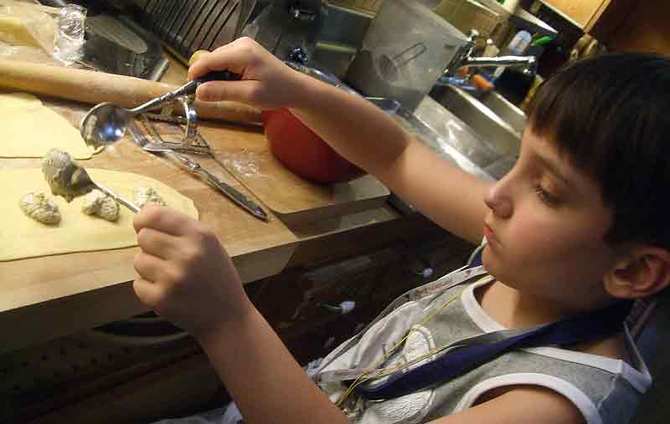
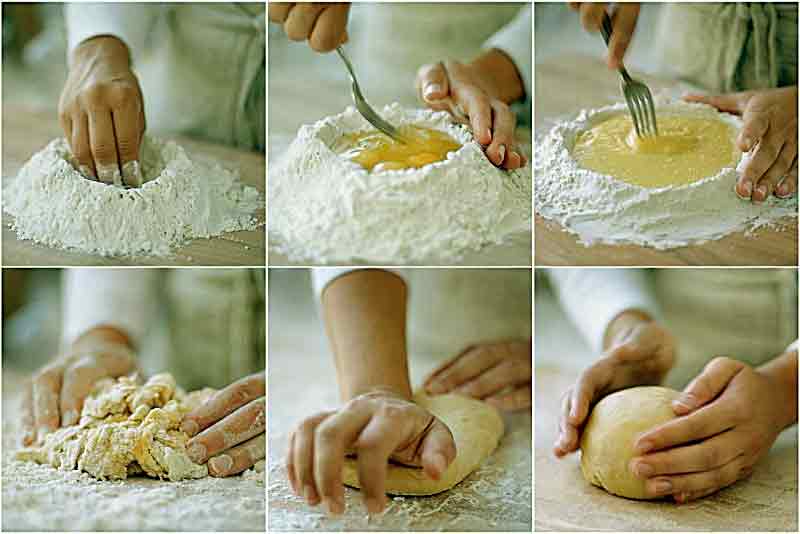
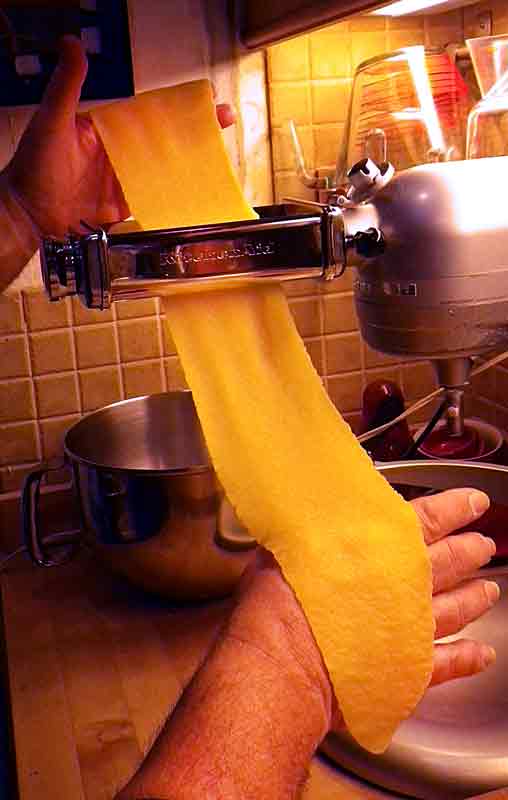
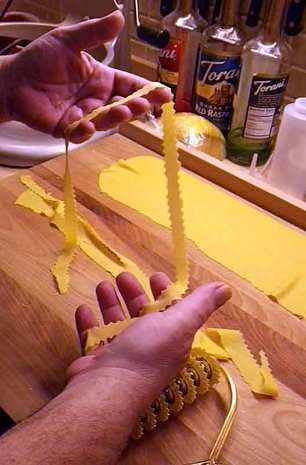
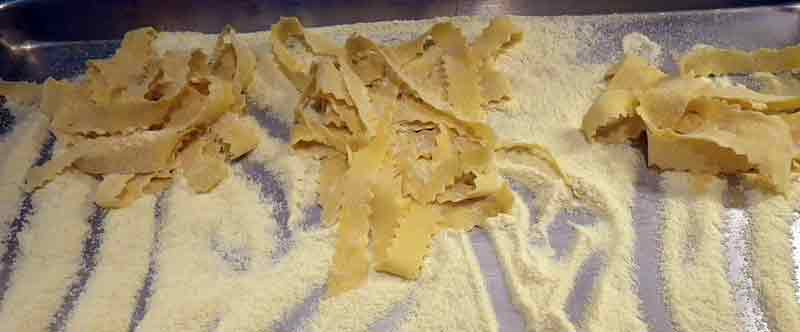
 RSS Feed
RSS Feed
